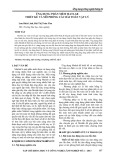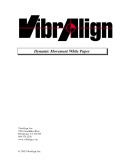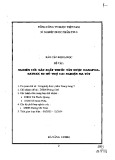
REVIEW ARTICLE
Animal models of amyloid-b-related pathologies in
Alzheimer’s disease
Ola Philipson
1
, Anna Lord
2
, Astrid Gumucio
1
, Paul O’Callaghan
1
, Lars Lannfelt
1
and Lars
N.G. Nilsson
1
1 Department of Public Health and Caring Sciences ⁄Molecular Geriatrics, Uppsala University, Sweden
2 BioArctic Neuroscience AB, Stockholm, Sweden
Introduction
Alzheimer’s disease (AD) accounts for 60–70% of
all dementia cases. Prevalence increases with age from
1% in the 60 to 64-year age group, to 24–33% in
those aged > 85 years. There is an insidious onset
with an initial loss of short-term memory, followed by
progressive impairment of multiple cognitive functions
that affect the activities of daily living. The AD diag-
nosis is based on a patient’s medical history, neurolog-
ical assessment and neuropsychiatric testing of
cognitive functions. Neuroimaging techniques and
biomarkers in cerebrospinal fluid (CSF) are invaluable
in differential diagnosis.
The neuropathological diagnosis takes into account
the regional distribution and frequency of histopatho-
logical hallmarks; specifically, extracellular neuritic pla-
ques and intracellular neurofibrillary tangles (NFTs) in
postmortem brain. Neuritic plaques mainly consist of
b-sheet-containing fibrils of amyloid-b(Ab) that are
surrounded by dystrophic neurites and reactive glial
cells. Diffuse Abdeposits are also present, but these
Keywords
Alzheimer’s disease; amyloid beta-protein;
amyloid beta-precursor protein; animal
model; apolipoprotein E; neuropathology;
presenilin-1; presenilin-2; tau proteins;
transgenic mice
Correspondence
L. Nilsson, Department of Public Health and
Caring Sciences, Molecular Geriatrics,
Uppsala University, Rudbeck Laboratory,
Dag Hammarskjo
¨lds va
¨g 20, SE-751 85
Uppsala, Sweden
Fax: +46 18 471 4808
Tel: +46 18 471 5039
E-mail: Lars.Nilsson@pubcare.uu.se
(Received 5 October 2009, revised 29
November 2009, accepted 30 December
2009)
doi:10.1111/j.1742-4658.2010.07564.x
In the early 1990s, breakthrough discoveries on the genetics of Alzheimer’s
disease led to the identification of missense mutations in the amyloid-b
precursor protein gene. Research findings quickly followed, giving insights
into molecular pathogenesis and possibilities for the development of new
types of animal models. The complete toolbox of transgenic techniques,
including pronuclear oocyte injection and homologous recombination, has
been applied in the Alzheimer’s disease field, to produce overexpressors,
knockouts, knockins and regulatable transgenics. Transgenic models have
dramatically advanced our understanding of pathogenic mechanisms and
allowed therapeutic approaches to be tested. Following a brief introduction
to Alzheimer’s disease, various nontransgenic and transgenic animal models
are described in terms of their values and limitations with respect to patho-
genic, therapeutic and functional understandings of the human disease.
Abbreviations
AD, Alzheimer’s disease; ApoE, apolipoprotein E; APP, amyloid-bprecursor protein; Ab, Amyloid-b; BACE-1, b-site APP cleaving enzyme-1;
CAA, cerebral amyloid angiopathy; CCR2, chemokine (C-C motif) receptor 2; CSF, cerebrospinal fluid; MWM, Morris water maze; NFTs,
neurofibrillary tangles; PDGF, platelet-derived growth factor; PS, presenilin; SMC, smooth muscle cells; wt, wild-type.
FEBS Journal 277 (2010) 1389–1409 ª2010 The Authors Journal compilation ª2010 FEBS 1389






























